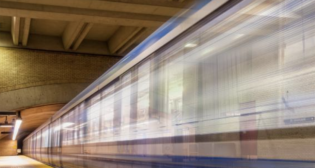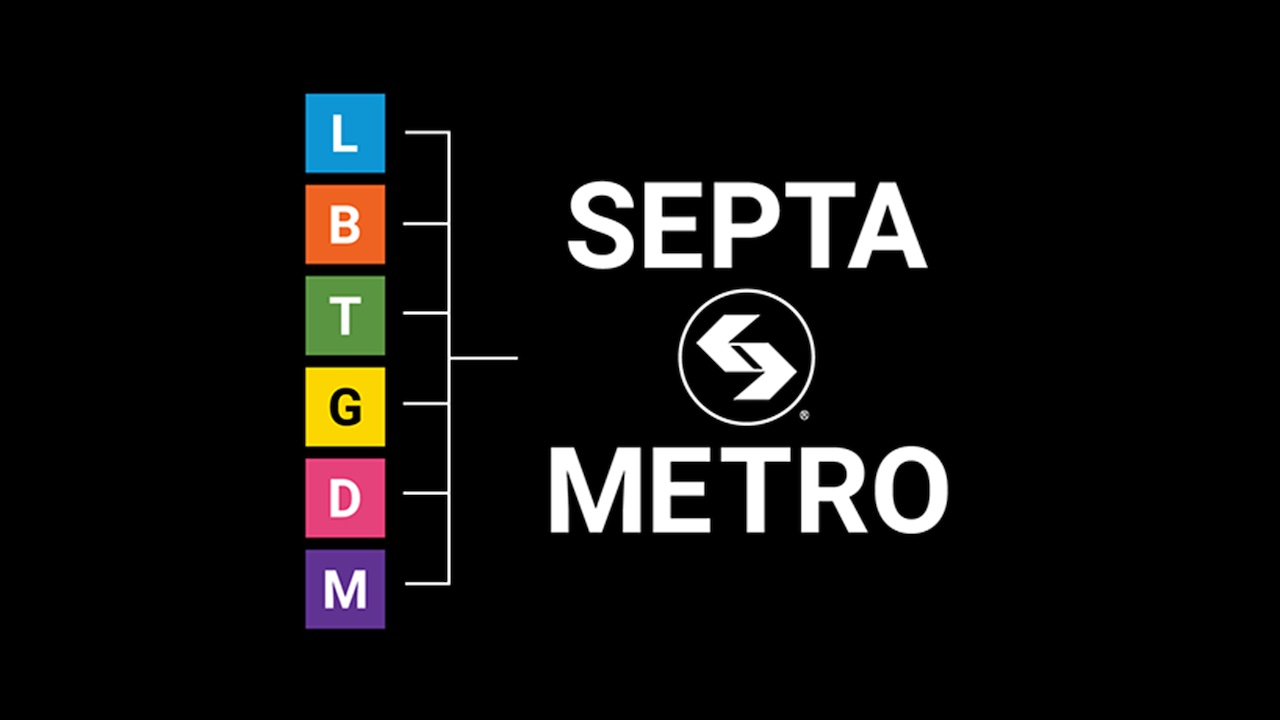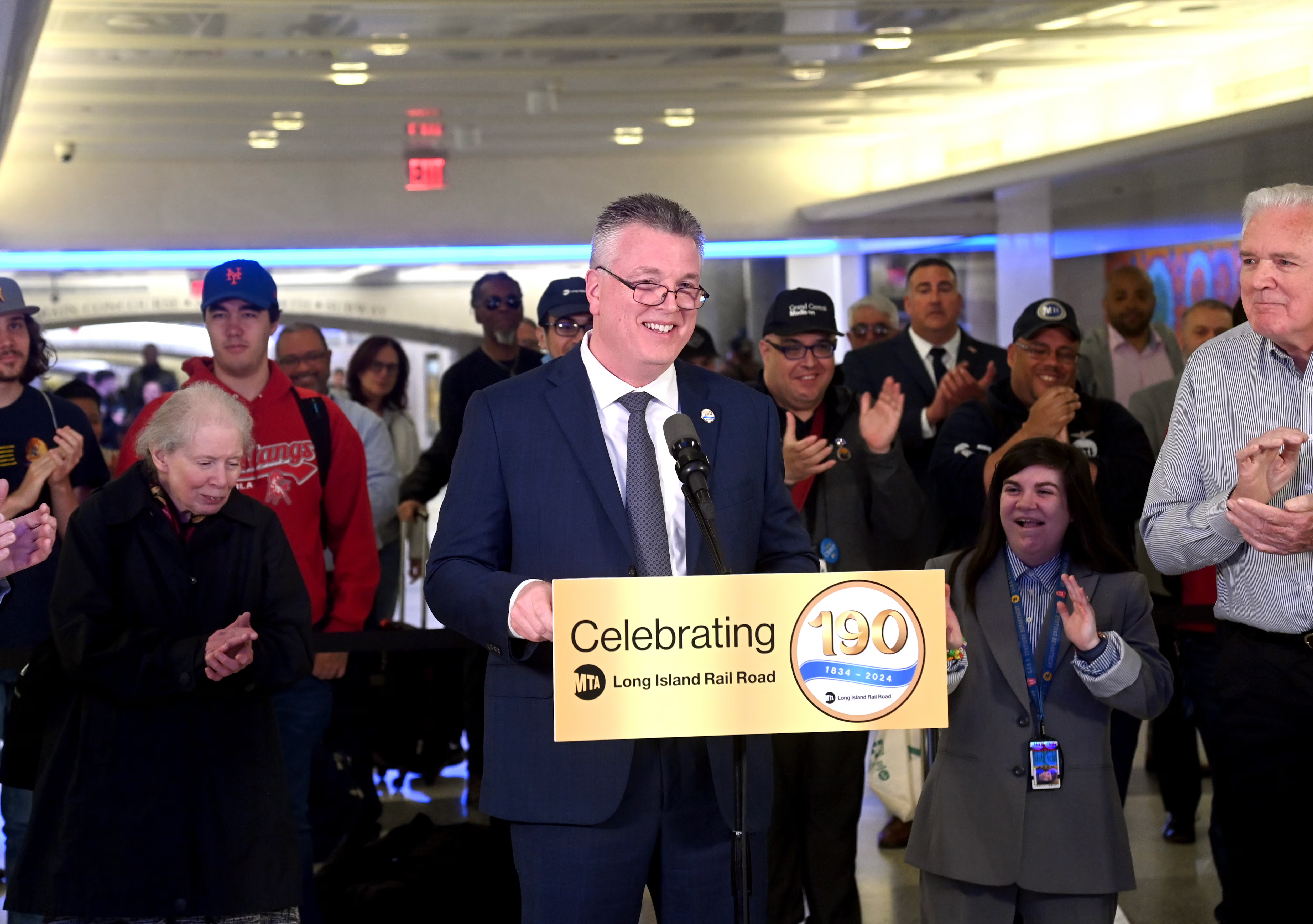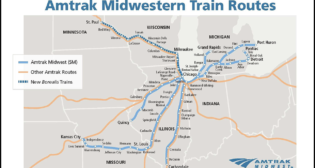
Transit Briefs: CTA, SEPTA, NYMTA/LIRR
Written by Carolina Worrell, Senior Editor
(SEPTA image)
The Chicago Transit Authority (CTA) officially launches a new chatbot to improve customer interaction. Also, the Southeastern Pennsylvania Transportation Authority (SEPTA) begins the installation phase of its new wayfinding system; and the New York Metropolitan Transportation Authority (MTA) celebrates the 190th anniversary of the founding of the Long Island Rail Road (LIRR).
CTA
CTA on April 24 announced that it has officially launched the Chat with CTA chatbot, a new virtual automated service created through a partnership with Google Public Sector featured on the agency’s website.
This communication tool, CTA says, “allows riders to report issues, provide feedback and receive answers in real-time.” Additionally, it provides CTA with valuable customer feedback where improvements are needed or informs the agency on the things it’s doing right.
“We are excited for this opportunity to provide our customers with another convenient option to contact us; to voice their concerns and share their feedback,” said CTA President Dorval R. Carter, Jr. “This will become a powerful tool for CTA that redefines our relationship with our customers in a very positive and proactive way. I’m really excited for the potential of what we can do with this, and how it will inform a lot of the other things we’ll be doing at CTA.
According to CTA, the automated chatbot supports simple, non-emergency topics, including cleanliness, maintenance, ADA accommodations, safety and security, disruptive behavior, employee feedback, service disruptions, and finding the next train/bus.
The chatbot, CTA says, complements the agency’s existing web feedback form and CTA Customer Service’s phone number by providing customers with another way to contact the agency.
“The launch of Chat with CTA is a great example of how AI can be used to improve the way citizens interact with public sector services,” said Brent Mitchell, Vice President, U.S. State & Local Government, and Education at Google Public Sector. “This innovative chatbot, powered by Google AI technology, provides a convenient way for riders to receive real-time information. We are proud to partner with the CTA on this initiative and are excited to continue to see the tremendous impact AI-powered solutions will have on the transportation industry and the public sector overall.”
To support the diversity of the region, customers have the option to chat in five languages, including English, Spanish, Polish, Filipino/Tagalog, and Simplified Chinese. If a customer is blind or has low vision, the chatbot supports screen readers. Customers can access Chat with CTA from any page on the agency’s website, including the newly simplified “Contact Us” page. And to enhance the customer experience, the new chatbot will be optimized for mobile device viewing.
Chat with CTA opens the door for more, future-facing customer enhancements. The agency says it is working on developing features for customers to engage in a two-way conversation, receive updates when their incident is resolved, and sign up for other, proactive communications.
The new chatbot tool, the agency says, “aligns with CTA’s goal of continuously improving the customer experience and developing new, modern features to expand CTA’s customer support options.”
SEPTA
SEPTA on April 24 marked a major milestone in the implementation of its new Metro wayfinding system, with the start of the installation phase. In conjunction with this, the new letters and symbols will now be used alongside existing terms on the agency’s website.
The first new signs have debuted as part of the opening for the new Drexel Station at 30th Street, and the rollout will continue station-by-station over the next two years. The next location for new signage is 15th St/City Hall, a critical complex at the core of the system that research found is often confusing for customers to navigate. This will occur later in 2024, followed by other stations on the Broad Street Line.
SEPTA says it will strive to make the transition as seamless as possible; however, riders should anticipate seeing both old and new signage during the transition period.
“The project will make the system easier to navigate for all passengers, regardless of language, ability, or familiarity with public transportation,” said SEPTA CEO and General Manager Leslie S. Richards. “The new signage and wayfinding tools will help everyday riders take new trips and contribute to Philadelphia’s preparation as a host city for the World Cup in 2026.”
The SEPTA Metro improvements include:
- Use of easy to see and read colors, letters, and numbers for each SEPTA Metro line. This will improve visibility and clarity.
- New maps and signs that show bus connections and highlight SEPTA’s most frequent bus lines.
- New station entrance and exit signage to make the system easier to find.
- New “neighborhood maps” to help riders get oriented when leaving a station.
- Adjusting station names to eliminate duplicates, such as “Girard” (Broad-Girard) on the Broad Street Line and “Girard” (Front-Girard) on the Market-Frankford Line, and merging complexes, such as “15th St/City Hall” instead of having two separate station names: “15th St” and “City Hall.”
“We have spent four years conducting research, collecting feedback, engaging with the public, and running temporary pilots to create a wayfinding system that caters to the needs of current and potential riders,” said SEPTA Director of Service Information Design Lex Powers. “We appreciate the enthusiasm and contributions of our customers throughout the planning and research process.”
SEPTA says it plans to complete the Broad Street Line first, before moving on to the Market-Frankford Line, trolley lines, and Norristown High Speed Line.
At the same time, SEPTA is improving its app, releasing more real-time information, working to vanquish “ghost buses”, and piloting new, easier-to-read bus detour signage to align with the larger wayfinding improvements.
More information is available here.
NYMTA/LIRR
The New York MTA on April 24 celebrated the 190th anniversary of the founding of LIRR, which took place on April 24, 1834.

The LIRR is the busiest commuter railroad in North America, carrying more than 200,000 customers each weekday and last year in conjunction with the opening of Grand Central Madison and Main Line Third Track, it operated more than 77,000 more trains than it did the prior year, a service increase of 41%, according to MTA.
To celebrate the occasion, the railroad invited the current longest-tenured Mail & Ride Monthly ticketholder, Phyllis Klecka of East Islip, who has been commuting on the railroad for 60 years.
“It’s the best place for me to relax and read,” said Klecka. “There has always been a great benefit to commuting on the LIRR, namely the time available to spend reading. The cars are usually quiet during the weekday morning and evening commutes, so my tote bag becomes a pop-up library filled with newspapers, books and articles.”
More information is available here.



